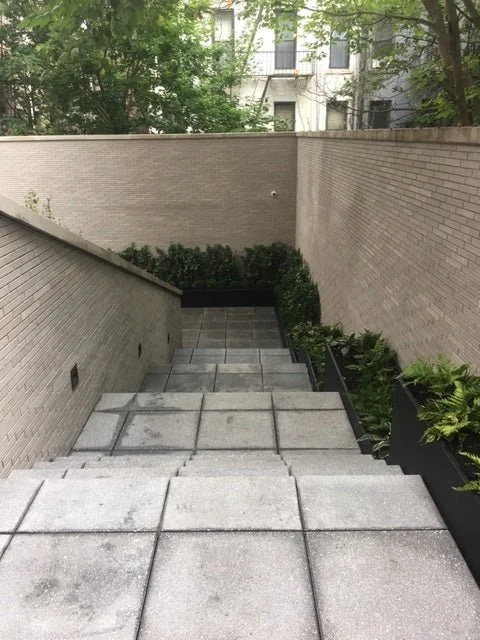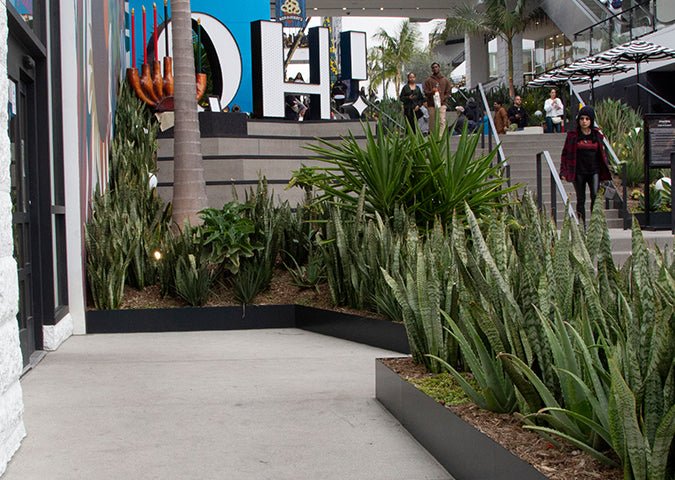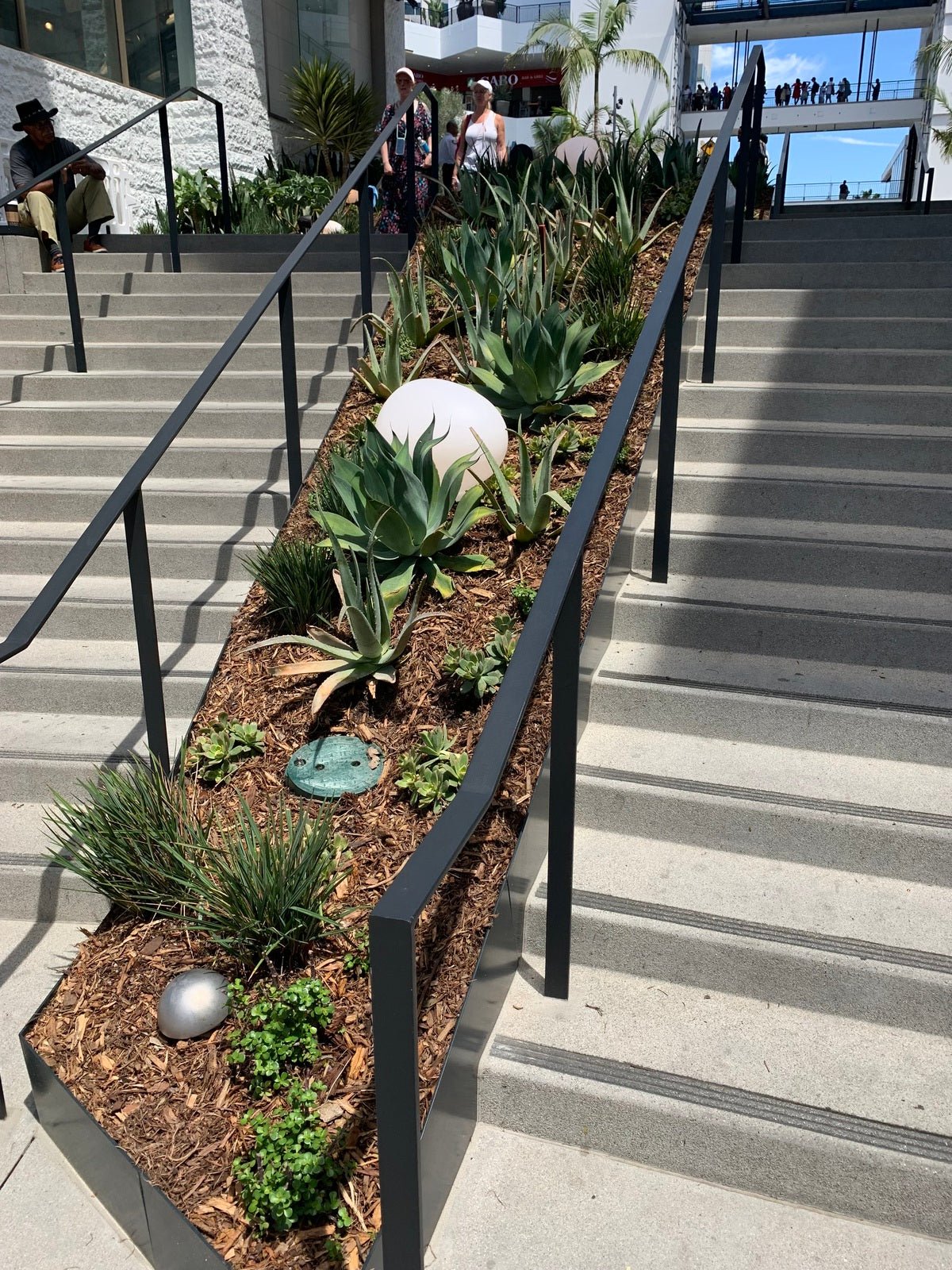Retaining Edging: The Importance of Walls in Your Garden
When designing a landscape, holding soil back can be especially challenging.
Solutions like retaining walls must be carefully engineered to withstand the significant load that soil places on a wall and can be 20+ feet high. But for less soil, a shorter version of a retaining wall — called retaining edging — can be used.
Design plans can dramatically benefit from retaining wall edging solutions — especially when a large plot of soil needs to be terraced or held back to prevent eroding. In wet climates, this type of erosion becomes even more concerning.
While retaining edging can certainly unify a design plan, it can also accentuate individual landscape elements..
An edging system can also serve as a practical tool to hold mulch in place, prevent damage by designating borders, and — believe it or not — add sophistication to your overall design plan. To learn more about edging made of marine-grade aluminum click here.
Keep reading to learn more about how landscape designers can create durable yet timeless planting solutions.
Connect Modular Planter System at Ovation Hollywood CA
Does My Landscape Need Retaining?
Sometimes, your landscape design plan needs an element that solves a problem and fits the overall design. Retaining can help when:
You’re working with a sloped area or trying to prevent soil or mulch from spilling over in the rain.
You need to lead the eye from one spot to the next in the flow of your design or want to corral foot traffic to a particular path.
You’re trying to create crisp lines between flower beds and other areas, such as a lawn, adjoining garden, or a single tree.
A large slope needs to be terraced or, for that matter, a much bigger solution, such as a retaining wall.
Your objective is to create a large planting area to hold soil in place, such as a rooftop or along a stairwell.
A nice, clean retaining edge or wall can be a solution for any of these scenarios. The next decision will be the type of retaining edge system that will work best.
Custom Metal Planters at Baltic St in Brooklyn, NY
Types of Retaining Walls and Edging
Below you’ll find descriptions of four common types of retaining walls and edging and use cases for each.
1. Gravity Retaining Wall, Edging, or Bottomless Planters
Gravity Retaining Wall
Instead of anchors or leverage used in many other types of retaining walls, a gravity retaining wall uses — you guessed it — gravity. This applies to cases where there are lighter loads of soil that need to be contained, much like edging.
To create gravity, these walls are constructed from concrete, stone, metal, or bricks. Your landscape contractor will typically tilt the walls slightly back into the soil to add additional stability.
Use Cases:
Versatility. Gravity walls can be tailored for sleek styles or more rustic preferences. Should you need stairs, curves, or precise corners, that’s no problem with a gravity wall.
Versatility Tight spaces. Since gravity walls are versatile, they can be the perfect solution for creating more usable space near shorelines, storm channels, or residential subdivisions.
Lighter loads. When a shorter wall is sufficient to hold the load of the soil. This needs to be determined by a professional.
Terraced slopes. If a gradual slope needs to be terraced.
Bottomless Planters
Another edging option incorporates bottomless planters.
Although you see “planter” in the name, this is not a container. Bottomless commercial planters act more like a frame. Similar to edging, bottomless planters offer a significant amount of visual appeal, while also providing enhanced functionality for growing your plants.
The most significant benefit of bottomless planters is flexibility. The contained space can be as wide as your specifications need them to be — and can have short or tall sidewalls.
Use Cases:
You have a large, open planting bed.
You want to keep costs low.
Your existing sub-base is suitable for growing plants or trees.
You need to create multiple terraces of foliage.
You would like to use edging to create a border.
You’re creating a space with a significant amount of soil — like a large planting bed — where there is currently no soil.
Connect Modular Planter System at Ovation Hollywood in CA
2. Anchored Retaining Wall
Installed, or anchored, into the ground for balance, anchored retaining walls involve anchors, cables, and thin walls. This option requires planning, expertise, and the involvement of a landscape professional.
The load (usually created by soil) is supported by a retaining wall, which is held in place by strong cables connected to the anchors. Some anchored retaining walls are reinforced using concrete and steel rods.
Use Cases:
Heavier loads. The materials and the engineering design of this type of wall accommodate larger, heavier loads.
Smaller spaces. Because it’s slimmer than most other options, an anchored retaining wall will help your landscape design be highly efficient with limited space.
Slope protection. Because they are so effective for designs that involve loose soil layered over rocks, anchored retaining walls are perfect when you're designing a sloped landscape.
3. Cantilever Retaining Wall
One of the most common types of retaining walls for construction projects, the cantilever retaining wall uses a stem and a base slab of concrete.
The bottom of the wall is typically embedded deep into the soil, to prevent the wall from moving. Most cantilever walls are narrow at the top and larger at the base.
Use Case:
Very Heavy Loads. Because a cantilever retaining wall includes an additional base component and leverages vertical resistance, it can provide additional restraint against overturning and sliding.
4. Sheet Piling Retaining Wall
A sheet pile retaining wall typically involves thin walls of steel that interlock with one another. Wood, vinyl, or reinforced concrete can also be used, but steel is most common because of its ability to withstand pressure.
Unlike cantilever retaining walls, sheet piling doesn’t require excavation. For this reason, however, it’s not ideal for permanent purposes because the lifespan of the fix cannot be guaranteed.
Use Cases:
Reusable. Because sheet piling walls are quick to build, they can be reused.
Above or below water. Sheet piling walls typically have a long service life and can survive above or below water level.
Adaptable. It’s easy to adjust the pile length by welding or bolting.
Connect Modular Planter System at Ovation Hollywood CA
The Benefits of Retaining and Edging Walls
Although most retaining walls or edging solutions are built to serve a purpose, the benefits extend well beyond utility. Retaining walls or edging can add aesthetic elements to your design plans and improve the aesthetic appeal as well as value.
An often overlooked benefit of a retaining wall or edging walls is the eco-friendly nature of these solutions. Incorporating such a wall into your design plan prevents stormwater runoff and erosion. Retaining walls also minimize disruption to natural vegetation.
Connect Modular Planter System at Baltic St in Brooklyn, NY
Learn More
To achieve the best outcome for your design plan, mixing and matching commercial-grade planters with retaining or edging walls is critical.
At PureModern, we specialize in creating high-quality custom edging fabricated for longevity with elevated design aesthetics.
If you’d like more information about metal retaining walls, get in touch with us today.. Our experts are available to answer any questions you may have.






